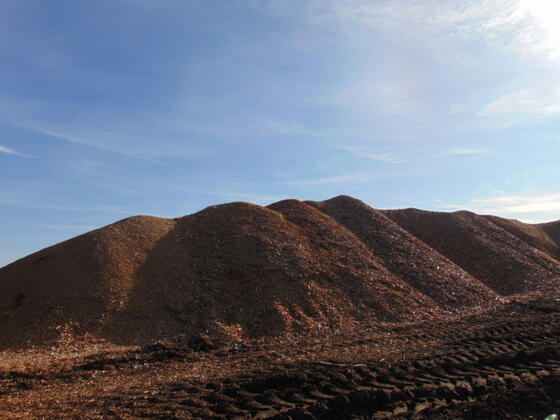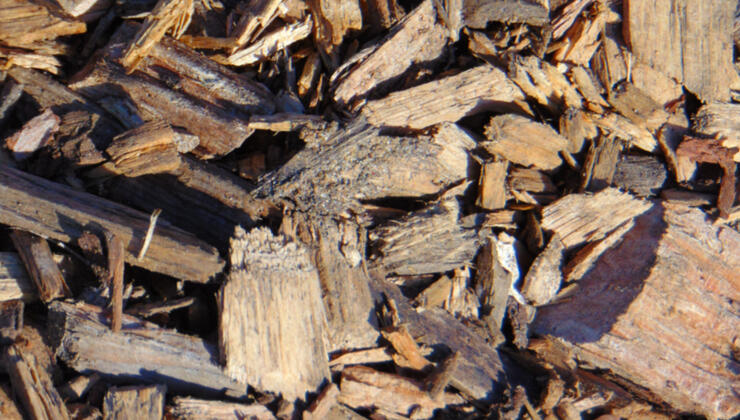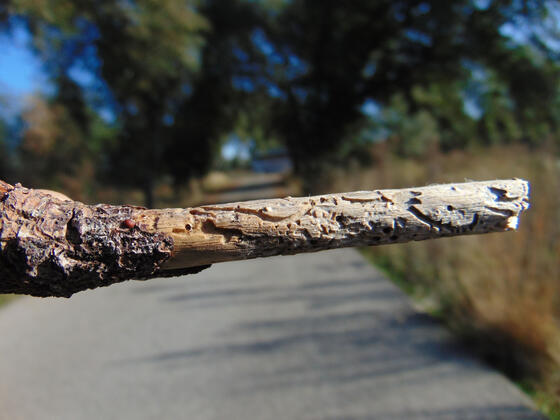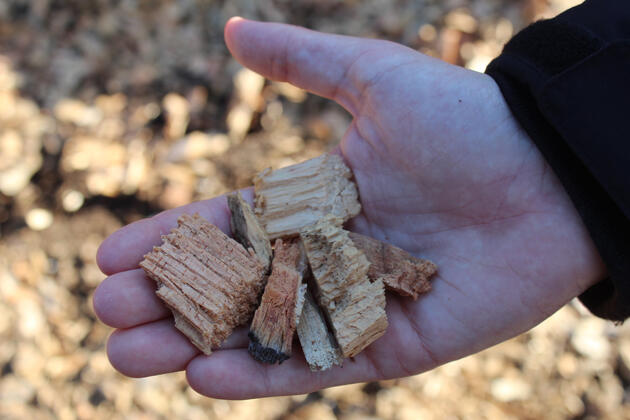Il caso di CastelporzianoUn caso particolare nell'area metropolitana di Roma: la pineta della Tenuta Presidenziale di Castelporziano.
La Tenuta Presidenziale di Castelporziano è situata sull'asse viario Cristoforo Colombo, che dista circa 25 km dal centro di Roma e si estende fino alla periferia della città, lungo il litorale romano, su una superficie di 60 km² (6039 ettari), comprendente 3,1 km di spiaggia ancora incontaminata e anche alcune tenute di caccia storiche, come Trafusa, Trafusina, Riserve Nuove e Capocotta. La Tenuta è area protetta dal 1999 e ospita la residenza estiva del Presidente della Repubblica Italiana.
A Castelporziano è presente la maggior parte degli ecosistemi tipici dell'area mediterranea.
Si incontrano, infatti - procedendo dal mare verso l'entroterra - un tratto di spiaggia ancora intatto, dune sabbiose recenti, con le tipiche piante pioniere e colonizzatrici che svolgono un'attiva azione di consolidamento delle sabbie, antiche dune stabilizzate con ampie zone umide retrodunali e zone di macchia bassa e alta con le tipiche specie sempreverdi e aromatiche; la lecceta, le pinete di pino domestico, il bosco misto planiziale di querce (tipico delle pianure costiere), la sughereta, pascoli per l'allevamento del bestiame domestico e aree per la coltivazione estensiva di cereali.
La maggior parte dell'estensione della Tenuta è occupata dal bosco planiziale igrofilo (bosco planiziale legato ad ambienti umidi), caratterizzato dalla presenza di querce sempreverdi e caducifoglie e di specie più prettamente igrofile, in prossimità di zone umide. La foresta (pianura mista), tra gli ecosistemi più delicati da proteggere, si estende per circa 2300 ettari, gli ambienti di macchia mediterranea bassa e alta coprono una superficie di circa 500 ettari, la lecceta occupa una superficie di 261 ettari, soprattutto nella zona retrodunale, e la sughereta copre una superficie di circa 460 ettari. I boschi si alternano a radure e praterie naturali, costituendo associazioni vegetali di grande varietà ambientale. Negli ambienti meno accessibili, la foresta è ricca di esemplari secolari e di alberi monumentali. Un recente censimento ha individuato 29 alberi monumentali tra i più significativi per dimensioni e forma, appartenenti a 7 specie diverse.
Le pinete di pino domestico della Tenuta di Castelporziano, realizzate con rimboschimento artificiale, fino a pochi anni fa si estendevano per circa 750 ettari, con lo scopo di consolidare le dune sabbiose e di proteggere dai venti marini la zona retrodunale, con finalità produttive per la raccolta del pinolo, con valore naturalistico legato al leccio e alla macchia mediterranea e con aspetto monumentale, soprattutto per le pinete secolari. Ora questa estensione è stata seriamente compromessa dall'attacco combinato di diversi parassiti; e tra questi anche Toumeyella parvicornis.
Il caso di Castelporziano
Diffusione di Toumeyella parvicornisLa presenza di Toumeyella parvicornis nella Tenuta Presidenziale di Castelporziano è stata accertata dalla Direzione della Tenuta alla fine 2019.
Non è possibile ricostruire il percorso e la causa di arrivo del parassita nella Tenuta, ma è stato accertato che la presenza di un'estesa pineta e le condizioni climatiche favorevoli sia all'incremento delle generazioni annue sia all'indebolimento delle piante hanno favorito proliferazione, diffusione ed entità dei danni causati dall'infestazione. In particolare, si è visto che le condizioni climatiche favorevoli hanno aumentato in un anno il numero di generazioni di Toumeyella parvicornis da tre a cinque.
Per quanto riguarda la diffusione del parassita, si può affermare che la causa è da ricercarsi nell'azione antropica, piuttosto che in quella del vento. È vero che nelle zone costiere il vento è forte e frequente, così come nelle zone costiere del Lazio e della Campania c'è continuità nella diffusione delle pinete, ma è l'uomo, con le sue attività economiche e i suoi spostamenti, a essere il principale vettore del parassita; molto più del vento, perché il parassita adulto è ancorato ai rami e solo le larve possono muoversi per l'azione del vento; ma solo su brevi distanze e possibilmente dove c'è contatto ramo-ramo. Ecco perché le pinete sono, tra l'altro, facilmente attaccabili, se consideriamo la vicinanza degli alberi tra loro.
Il caso di Castelporziano
Dati relativi all'evoluzione climatica a RomaDal 2000 a oggi, le temperature in Europa sono aumentate più del doppio della media globale di tutti i continenti del pianeta, raggiungendo una media di +0,5° di riscaldamento per decennio.
Nella città di Roma, dove il clima è generalmente mite e di tipo mediterraneo, l'aumento delle temperature è più evidente che negli altri capoluoghi di regione della penisola italiana: la temperatura media del periodo 2013-2023 segna i valori più elevati su Roma (17,7°), con una media di +1,7° rispetto al periodo 1981-2011. Inoltre, a Roma si registrano tassi di umidità molto elevati a causa della debole circolazione anticiclonica, per cui l'aria ristagna negli strati inferiori e si arricchisce di vapore acqueo, surriscaldandosi sempre di più.
Il cambiamento climatico incide sia sul numero di generazioni annue di Toumeyella parvicornis, creando condizioni ideali per la vita del parassita, che sulla condizione di stress di Pinus pinea L., che risente fortemente della mancanza di acqua.
Il caso di Castelporziano
Interventi di contenimento e abbattimento
Una volta accertata la presenza di Toumeyella parvicornis nel 2019, è stato attivato un programma di monitoraggio dell'infestazione, tramite dati di campo e da remoto - con immagini satellitari - in accordo con gli enti fitoterapici competenti, sia a livello nazionale che regionale. In una prima fase, come specificato anche nel 2000 dal Comitato Sanitario Nazionale (CFN) nelle Linee Guida per la gestione del phytomythium, le buone pratiche selvicolturali e il diradamento delle pinete hanno rappresentato l'unica arma per contenere l'infestazione.
Nel 2021 il Ministero della Salute ha autorizzato in via eccezionale l'uso di un prodotto a base di abamectina, ma non su grandi pinete. È stata quindi avviata una sperimentazione, anche metodologica, su una parte degli alberi coinvolti, i cui risultati sono stati pubblicati nell'articolo Toumeyella parvicornis versus endotherapic abamectin: three techniques, 1 year after (Nicolò di Sora, Luca Rossini, Mario Contarini, Giovanni Mastrandea e Stefano Speranza, Pest Management Science, 2023). Al termine della fase sperimentale è stata adottata su larga scala la metodica di somministrazione dell'endoterapia che aveva registrato il miglior rapporto tra efficacia e sostenibilità tecnica ed economica. Il trattamento non è risolutivo ma è essenziale nella fase di picco epidemiologico, per contrastare l'azione di Toumeyella parvicornis.
Nel 2022 è stato ripetuto l'intervento di endoterapia, sulle stesse 1300 piante, a cui ne sono state aggiunte altre 300.
Nel 2023 sono stati eseguiti complessivamente 1950 trattamenti. Le piante abbattute, nel rispetto della legge, sono state ridotte a cippato, destinato alla combustione e alla termoconversione in aree specificatamente indicate e non in situ. Per evitare la diffusione accidentale del parassita al di fuori dell'area infestata, occorre prestare la massima attenzione durante la fase di trasporto; e, in particolare, gli addetti devono assicurarsi di non avere insetti sui propri indumenti o sulle proprie scarpe, prima di risalire sui mezzi (si raccomanda l'utilizzo di tute monouso); deve essere evitata la sosta dei mezzi in aree infestate; è importante la copertura/chiusura con teloni dei mezzi adibiti al trasporto del materiale.
Legna triturata e trucioli di Pinus pinea L. a Castelporziano
Il caso di Castelporziano
Restauro paesaggisticoPer il futuro è già in corso la progettazione di interventi di ripristino forestale: l'intento è quello di sostituire le porzioni di pineta abbattute con un'estensione di foresta mista, composta da specie tipiche dell'area costiera mediterranea, più resistenti a ulteriori infestazioni globali, grazie all'elevata biodiversità e al valido adattamento alle nuove condizioni meteoclimatiche locali.
ㅤ
Come il cambiamento climatico influenza la diffusione di Toumeyella parvicornis su Pinus pinea L., 1753
Il caso della Tenuta di Castelporziano (Roma).
Autunno 2014, Napoli: Prima segnalazione della presenza di Toumeyella parvicornis, insetto nativo del Nord America che rappresenta una pericolosa minaccia per la sopravvivenza dei pini, in particolare di Pinus pinea L.
2018, Roma: Toumeyella parvicornis colpisce visibilmente i pini, in particolare quelli situati nella zona Sud della città.
Quali condizioni climatiche favoriscono la diffusione del parassita? E come si stabilizzano le aree o il numero delle generazioni infestanti? L'area di studio della pineta romana di Castelporziano è situata all'interno della Tenuta del Presidente della Repubblica.
Le ricerche svolte e i dati elaborati consentono di individuare con chiarezza lo stretto legame tra i
cambiamenti climatici (innalzamento della temperatura, fenomeni di siccità, violenti fenomeni di precipitazioni) e la rapida e distruttiva diffusione di Toumeyella parvicornis sulla popolazione di Pinus pinea L. nell'area metropolitana di Roma e nella Tenuta di Castelporziano, in particolare.
L'innalzamento delle temperature contribuisce al benessere del parassita e, in particolare, aumenta il numero di generazioni in un anno, con conseguente, inarrestabile proliferazione di Toumeyella parvicornis, che interviene sulla popolazione di Pinus pinea L., favorendo il successivo attacco fungino portato da Tomicus destruens, dal caratteristico fumo fuligginoso; l'azione combinata dei due parassiti è dannosa per le specie vegetali. Queste sono già gravemente indebolite dalla scarsità d'acqua e dal progressivo abbassamento della falda acquifera, non arricchita dalle piogge, poco abbondanti in quantità e troppo violente in intensità: le piogge brevi e violente infatti non sono accolte al terreno ma, per fenomeni di ruscellamento, l'acqua piovana defluisce via, senza essere assorbita negli strati profondi e quindi senza arricchire la falda acquifera sotterranea. Inoltre, l'eccessiva urbanizzazione delle aree limitrofe all'area della Tenuta di Castelporziano, con forte richiesta di acqua sia in fase di costruzione degli edifici che nell'uso delle abitazioni, contribuisce ad abbassare ulteriormente il livello della falda acquifera che non è più facilmente raggiungibile dalle radici degli alberi: questi finiscono quindi in una condizione di stress e debolezza che li rende di fatto incapaci di difendersi dagli attacchi dei patogeni.
Infine è importante ricordare la caratteristica principale di Pinus pinea L., ovvero il bassissimo grado di variabilità genetica, per cui non è possibile aspettarsi risposte diversificate all'attacco degli agenti fitosanitari.
Per concludere, possiamo quindi riassumere i fattori di diffusione della Toumeyella parvicornis, scoprendo che sono tutti collegati all'attività antropica; Infatti
- La diffusione del parassita dal continente americano all'Europa è stata sicuramente favorita, se non addirittura innescata, dagli scambi commerciali, sempre più legati alla globalizzazione e al fitto scambio di merci e al movimento delle persone.
- Anche su piccola scala, molto più del vento, è il fattore umano a favorire la diffusione del parassita.
- L'innalzamento delle temperature favorisce un aumento del numero di generazioni del parassita e quindi del numero di parassiti. E non servono ulteriori indagini per poter affermare che l'uomo è il principale
responsabile dell'aumento della temperatura media. Inoltre, lo spostamento delle fasce climatiche, con zone calde sempre più ampie, allarga ulteriormente l'area favorevole allo sviluppo e alla diffusione di Toumeyella parvicornis.
- Oltre all'innalzamento delle temperature, è tutto il fenomeno del cambiamento climatico - influenzato anche da fattori antropici - a influire sulla diffusione del parassita: prima ancora che il parassita si diffonda, i pini sono già stressati dal caldo, dall'assenza di acqua, dall'azione del vento e da falde acquifere prosciugate non solo dall'assenza di piogge regolari ma anche dall'eccessiva richiesta di acqua nei nuovi centri fortemente urbanizzati. Le immagini satellitari studiate danno chiara testimonianza di tutto questo fenomeno. E, su piante deboli, l'azione di Toumeyella parvicornis è devastante.
- Infine, la scelta dell'uomo di creare habitat seminaturali, come le pinete, caratterizzati da scarsa biodiversità, abbassa la probabilità di resilienza al parassita. Per il futuro, sarà quindi necessario ripensare gli spazi verdi, vedendoli come riserve di biodiversità, perché solo la biodiversità garantisce la risposta efficace della vegetazione agli attacchi del parassita.I Climate detectives del gruppo Cocciniglia busters offrono quindi la loro riflessione a quanti - giovani o
adulti, studenti o lavoratori, artisti o politici... - desiderano, come loro, offrire, grazie al loro impegno e alla loro forte consapevolezza, una possibilità al nostro Pianeta che soffre. Dopo tanto studio, ora è il momento di scelte responsabili e di un lavoro sereno a favore del Pianeta. Perché agli errori dei cittadini di ieri si sostituiscano i rimedi equilibrati - e non più rinviabili - dei cittadini di oggi e di domani.
E così giungiamo alla fine della nostra piccola, grande avventura. A questo punto non ci resterebbe che salutarci. Ma sarebbe troppo poco. Infatti i Cocciniglia busters non hanno nessuna intenzione di dire arrivederci e congedarsi. Abbiamo capito che, se l'uomo è responsabile, l'uomo deve trovare delle soluzioni. Siamo troppo giovani per poter intervenire nella politica e nella gestione delle situazioni ambientali, ma sappiamo che possiamo fare comunque molto. E vogliamo farlo: con le scelte quotidiane, con lo studio, con la fantasia e l'entusiasmo tipici dei giovani; siamo pronti ad impegnarci per aiutare la sopravvivenza del nostro pianeta. È vero, siamo giovani, ma è altrettanto vero che per noi è finito il tempo dell'indifferenza. È arrivato il momento della nostra partecipazione!
Ringraziamo la Tenuta di Castelporziano, nelle persone del Dott. Giovanni Mastrandrea, della Dott. ssa Dora Cimini e dei Carabinieri forestali della Tenuta, che ci hanno accompagnato nella visita alla zona infestata dal parassita e che hanno condiviso con noi informazioni, conoscenze e coscienza civile.
Ringraziamo anche i docenti che ci hanno aiutato: Trapani, Perosino e Orlando.
Infine, ringraziamo ESA e Muse di Trento per la grande opportunità che ci hanno dato.
E ora i Cocciniglia busters sono pronti a ripartire.
Siti web:https://apps.sentinel-hub.com/eo-browser/https://www.actaplantarum.org/flora/flora_info.php?id=198http://www.agricoltura.regione.campania.it/difesa/toumeyella.htmlhttps://www.alberiurbani.it/wp-content/uploads/2022/04/Pest-Management-Science-2022-Di-Sora-Endotherapic-treatment-to-control-Toumeyella-parvicornis-Cockerell-infestations.pdfhttps://www.cmcc.it/ithttps://coccinigliadelpino.com/la-cocciniglia-tartaruga-del-pino/
https://dryades.units.it/Romahttps://www.italianostra.org/wp-content/uploads/TOUMEYELLA-RELAZIONE-ROMA-421Mascioli-1.pdfhttps://larivistaculturale.com/2023/06/08/cultura-storia-roma-castel-fusano-chigi/https://www.nationalgeographic.it/roma-non-e-stata-costruita-per-il-clima-di-oggi-siamo-ancora-in-tempo-per-salvarlahttps://palazzo.quirinale.it/residenze/c_porziano.htmlhttps://www.regione.lazio.it/sites/default/files/2023-09/SCHEDA-Toumeyella-parvicornis-aggiornata-08-09-2023.pdfBibliografia:Decreto ministeriale 3 giugno 2021 – Misure fitosanitarie di emergenza ai fini del contrasto dell’organismo nocivo Toumeyella parvicornis (Cockerell) (Cocciniglia tartaruga). Gazzetta Ufficiale n.173 del 21-07-2021;
Garonna A. P., Scarpato S., Vicinanza F., Espinosa B. (2015) Prima segnalazione di Toumeyella parvicornis (Cockerell) in Europa (Hemiptera: Coccidae). Zootaxa (Print: 1175-326 Online: 1175-5334), Vol 3949, n.1, pag 142–146,
Garonna A. P., Foscari A., Russo E., Jesu G., Somma S., Cascone P., Guerrieri E. (2018) La diffusione della cocciniglia testuggine del pino non autoctona Toumeyella parvicornis (Hemiptera: Coccidae) in Europa: una minaccia importante per Pinus pinea L. nell'Italia meridionale, iForest 11: 628-634.
Categorizzazione dei parassiti di Toumeyella parvicornis; Gruppo di scientifici esperti dell'EFSA Panel on Plant Health (PLH). 27.01.2022, su EFSA Journal
Linee guida per la gestione del Fitomizio Toumeyella Parvicornis (Cockerell) 21.09.2020
Linee guida per la gestione del materiale di risulta degli abbattimenti e delle potature di piante infestate da Toumeyella parvicornis (Cockerell) - Documento 33 del 01.03.2023
Toumeyella parvicorns contro abamectina endoterapica: tre tecniche, 1 anno dopo, Nicolò di Sora, Luca Rossini, Mario Contarini, Giovanni Mastrandrea, Stefano Speranza, on Pest management Science, SCI 11.05.2023
ㅤ
ㅤLe foto utilizzate per la presentazione del progetto sono state scattate dagli studenti durante la visita alla Tenuta di Castelporziano, Roma.
ㅤ
Realizzazione: Plema Llyanross Loredana Sanchez
Realizzazione grafici: Pisano Raffaele
Realizzazione logo: Crea Isabella, Di Lello Emma
Realizzazione immagini satellitari: Pisano Raffaele, Rollo Diego Mayoro
Revisione sito: Crea Isabella, Di Lello Emma, Plema Llyanross Loredana Sanchez, Mazzeo Claudia
Realizzazione testi: tutta la classe
Traduzioni: tutta la classe, Mazzeo Claudia
Spiegazione del logo
Abbiamo disegnato un albero sul logo che rappresenta il nostro obiettivo, ovvero prenderci cura della popolazione malata di Pinus pinea L., mostrando il modo in cui le piante si polverizzano, trasformandosi in fumaggine. In secondo luogo abbiamo rappresentato come la Toumeyella parvicornis si attacca agli alberi e come succhia la ninfa delle piante, esagerando le dimensioni del parassita.






